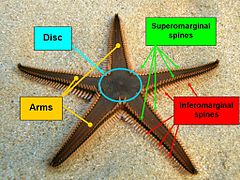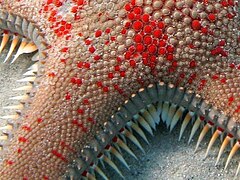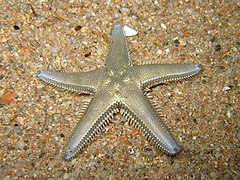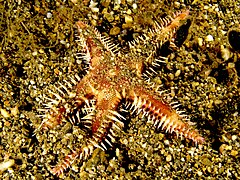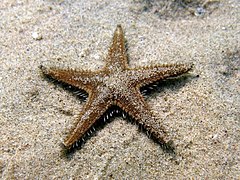
The Astropectinidae are a family of sea stars in the order Paxillosida. Usually, these starfish live on the seabed and immerse themselves in soft sediment such as sand and mud.

The Asteriidae are a diverse family of Asteroidea in the order Forcipulatida. It is one of three families in the order Forcipulatida.
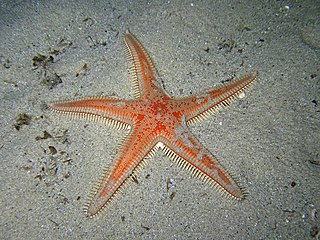
Astropecten aranciacus, the red comb star, is a sea star of the family Astropectinidae. It is native to the east Atlantic Ocean and the Mediterranean Sea.
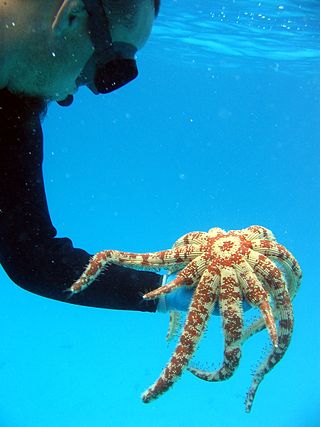
The Paxillosida are a large order of sea stars.
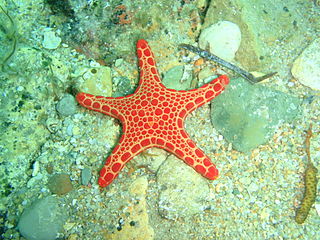
Goniasteridae constitute the largest family of sea stars, included in the order Valvatida. They are mostly deep-dwelling species, but the family also include several colorful shallow tropical species.
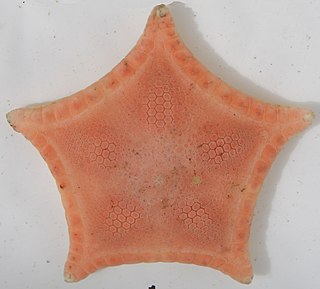
Ceramaster is a genus of cushion stars in the family Goniasteridae. The species in this genus have no arms. They live in deeper waters than most sea stars.

Henricia is a large genus of slender-armed sea stars belonging to the family Echinasteridae. It contains about fifty species.
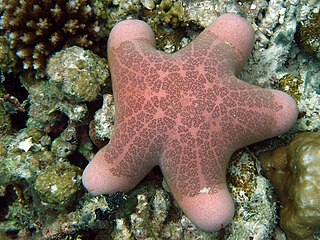
The Oreasteridae are a family of sea stars in the class Asteroidea.

Pentaceraster is a genus of sea stars in the family Oreasteridae. Members of this genus are most often observed in warm coastal waters of the Pacific and Indian Oceans.

Luidia is a genus of starfish in the family Luidiidae in which it is the only genus. Species of the family have a cosmopolitan distribution.

Astropecten irregularis is a sea star of the family Astropectinidae. Common names include Sand sea star.

Astropecten bispinosus is a sea star of the family Astropectinidae from the Mediterranean Sea.

Astropecten platyacanthus is a sea star of the family Astropectinidae.

Astropecten jonstoni is a sea star of the family Astropectinidae.

Astropecten spinulosus is a sea star of the family Astropectinidae.
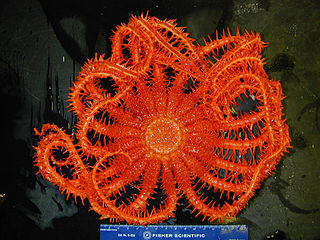
The Brisingidae are a family of starfish found only in the deep sea. They inhabit both the Atlantic and Pacific Oceans at abyssal depths, and also occur in the Southern Ocean and around Antarctica at slightly shallower depths.

Psilaster is a genus of sea stars of the family Astropectinidae.

Ophiactis is a genus of brittle stars (Ophiuroidea).
Ophidiaster is a genus of echinoderms belonging to the family Ophidiasteridae.





